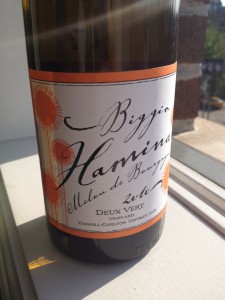Confusion and More Confusion
When you name a grape “Melon de Bourgogne” you could at least make sure it is a grape from “Bourgogne.” But no, that’s what you call a grape from the Loire Valley, much to the west and to the north of the Bourgogne/Burgundy region. It’s no surprise then that people just refer to the grape as “melon” but again, confusion reigns. The wine tastes nothing like a melon – this grape is pure citric battery acid.
Memorable Melon – you wish
So, maybe the most famous wine made from this Melon grape would be somehow memorable or related to Melon. Again, no. “Muscadet” is the (somewhat) famous Loire wine that is made from Melon de Bourgogne, and pairs well with oysters and haters of etymology. In summary, (1) Melon de Bourgogne is from the Loire, (2) Melon tastes like limes, and (3) Melon plus oysters is a fantastic combination. Enough to baffle anyone trying to understand the grape.
Taste
Like brushing your teeth, this is the complete dental hygiene package. Smells like toothpaste, the kind with extra calcium – in wino lingo, “chalky.” Taste is rigid and acidic with loads of citrus – want to say lime and tangerine mostly. Pretty thin finish but on the clean side, so it really does feel like your teeth are clean, clean with a lime twist.
Detail Up!
2010 Biggio Hamina Deux Melon de Bourgogne from McMinnville in the Willamette Valley, Oregon ($17 at the vineyard)
Random Googles:
* Dutch traders brought the grape from its ancestral Burgunday home to Brittany, the part of the Loire Valley that meets the Atlantic. Yes, it once lived in Burgundy but got banned by Philip the Bold because it produced bad wines and took up permanent residency in the Loire Valley.
* Oregon produces a fair amount of the Melon. They were hoodwinked. Stewart Vineyard brought the plant in during the late 1970s, thinking it was Pinot Blanc and marketed it as such for a number of years. Only later was true Pinot Blanc brought to Oregon.
* Melon is a pretty neutral grape, compared to Palomino (the famous grape of Sherry), which allows winemakers a huge amount of latitude in forming the eventual wine. Sur lie, a production technique of leaving the wine on its dead yeast dating back to at least biblical times (Isaiah 25:6), is often used for Melon wines. Otherwise, do like the Dutch and burn your wine. Because “brandewijn” is literally “burnt wine” in Dutch – we shorten it to “brandy.”
